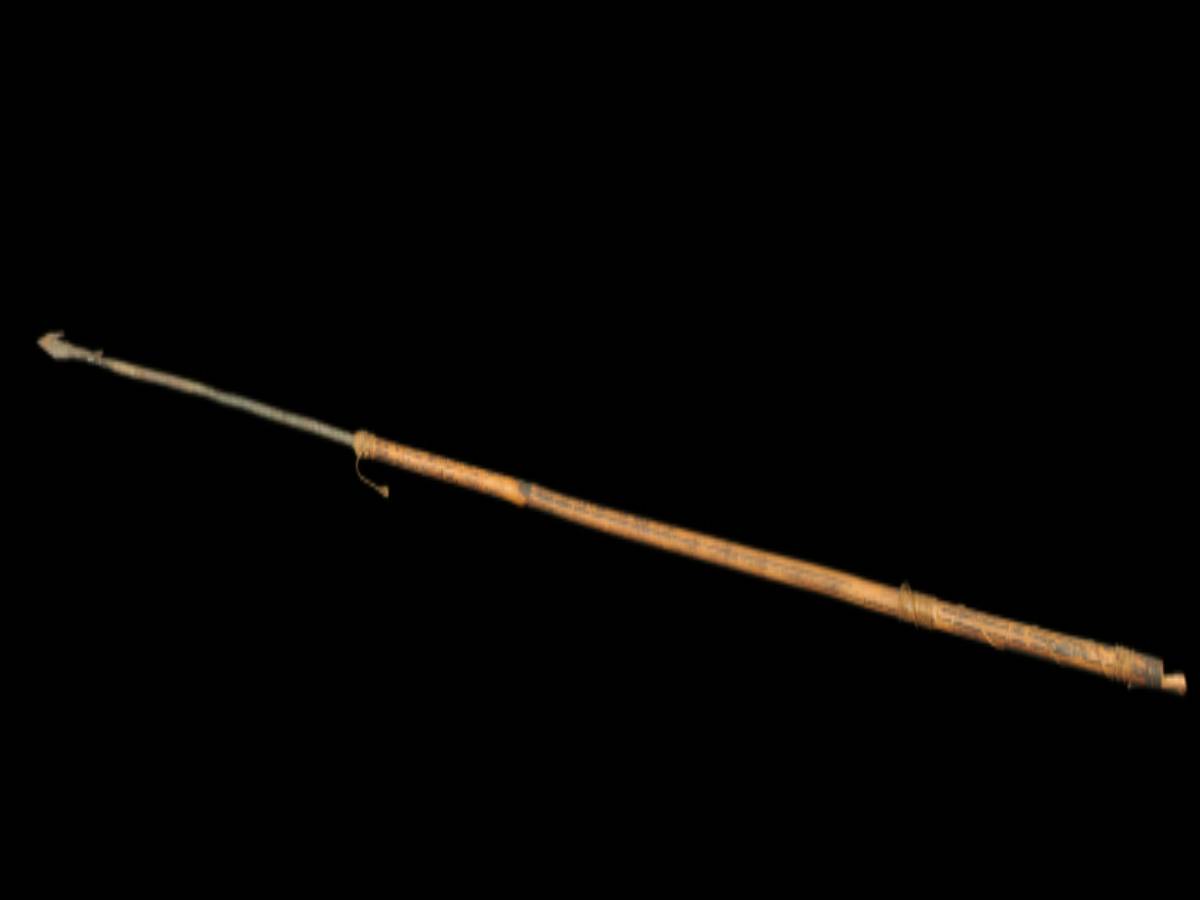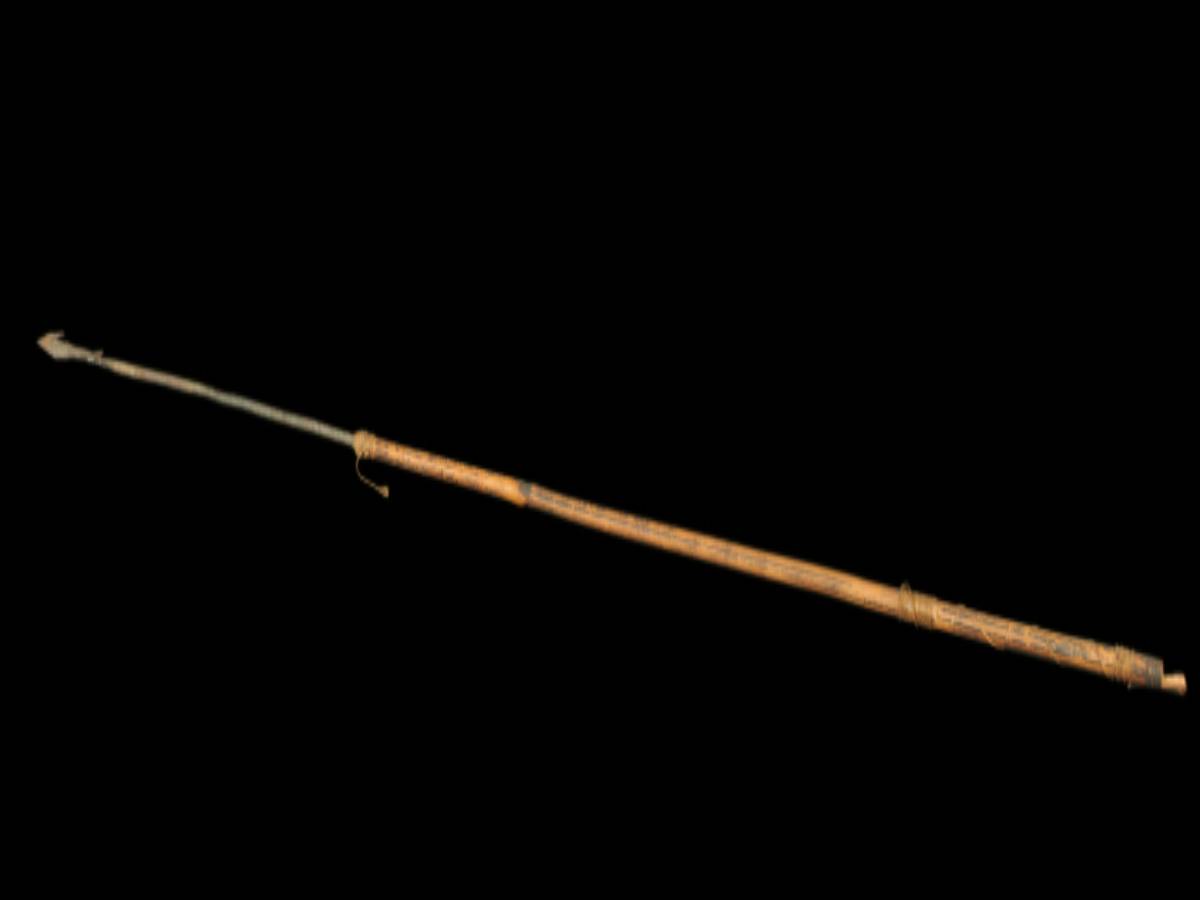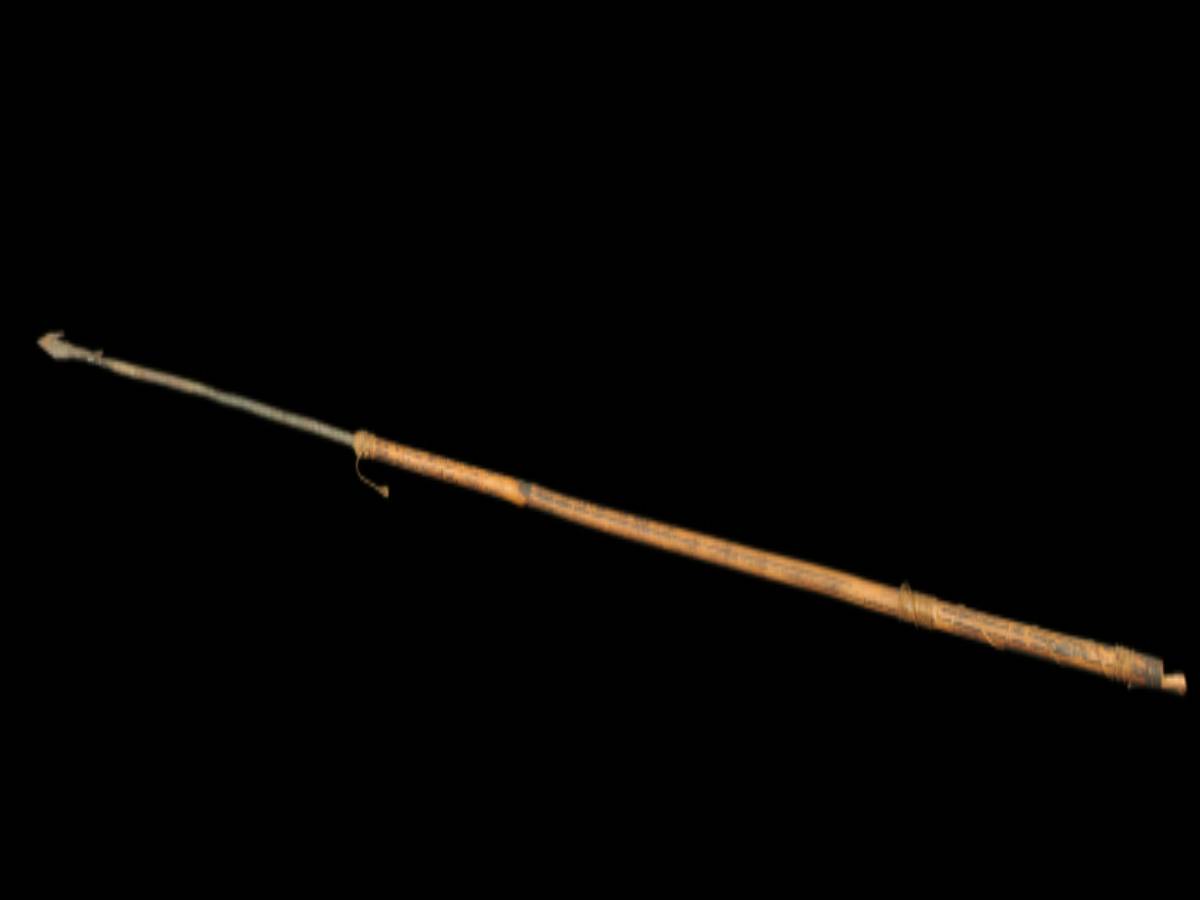State
Tribe Name
Art Type
short description
The traditional arrow Sher-Tar-Fe has been widely used by the Rabha tribe of Northeast India, and it constitutes one of the indigenous communities that form a significant part of the country, especially Assam, Meghalaya, and the parts of West Bengal. This handmade arrow not only speaks volumes of the Rabhas' high knowledge about hunting techniques but also tells the story of their indigenous weapon making. The arrow features a thin shaft of strong bamboo, a material widely available in the area because of its flexibility and strength. The arrowhead is made from iron and designed artistically with a sharp barb on the tip and one more barb along the tang of the arrow—both have improved their grip and lethality upon impact.
Thumbnail

Filter Postion
Left
Filter Background
Off
Theme
Filter Header Image

content
Image

description
The traditional arrow Sher-Tar-Fe has been widely used by the Rabha tribe of Northeast India, and it constitutes one of the indigenous communities that form a significant part of the country, especially Assam, Meghalaya, and the parts of West Bengal. This handmade arrow not only speaks volumes of the Rabhas' high knowledge about hunting techniques but also tells the story of their indigenous weapon making. The arrow features a thin shaft of strong bamboo, a material widely available in the area because of its flexibility and strength. The arrowhead is made from iron and designed artistically with a sharp barb on the tip and one more barb along the tang of the arrow—both have improved their grip and lethality upon impact.
The iron head is fitted into the bamboo shaft and tightly bound with a really natural fiber string which ensures stability during use and also endurance. The butt end of the shaft is also bound with fiber strings which are likely to be used for more grip and balance. Traditionally, such arrows as the Sher-Tar-Fe were meant for hunting and in some cases, such arrows could be used in tribal conflicts. Although the practice of hunting has now declined because of wildlife protection laws as well as socio-cultural changes, the arrows still retain symbolic and cultural meanings. They are now more commonly seen in tribal exhibitions, museums, and ceremonial displays, contributing to the heritage of the Rabha tribe.
The iron head is fitted into the bamboo shaft and tightly bound with a really natural fiber string which ensures stability during use and also endurance. The butt end of the shaft is also bound with fiber strings which are likely to be used for more grip and balance. Traditionally, such arrows as the Sher-Tar-Fe were meant for hunting and in some cases, such arrows could be used in tribal conflicts. Although the practice of hunting has now declined because of wildlife protection laws as well as socio-cultural changes, the arrows still retain symbolic and cultural meanings. They are now more commonly seen in tribal exhibitions, museums, and ceremonial displays, contributing to the heritage of the Rabha tribe.
Image Mode
landscape
promoted
Off
Verified
Off
